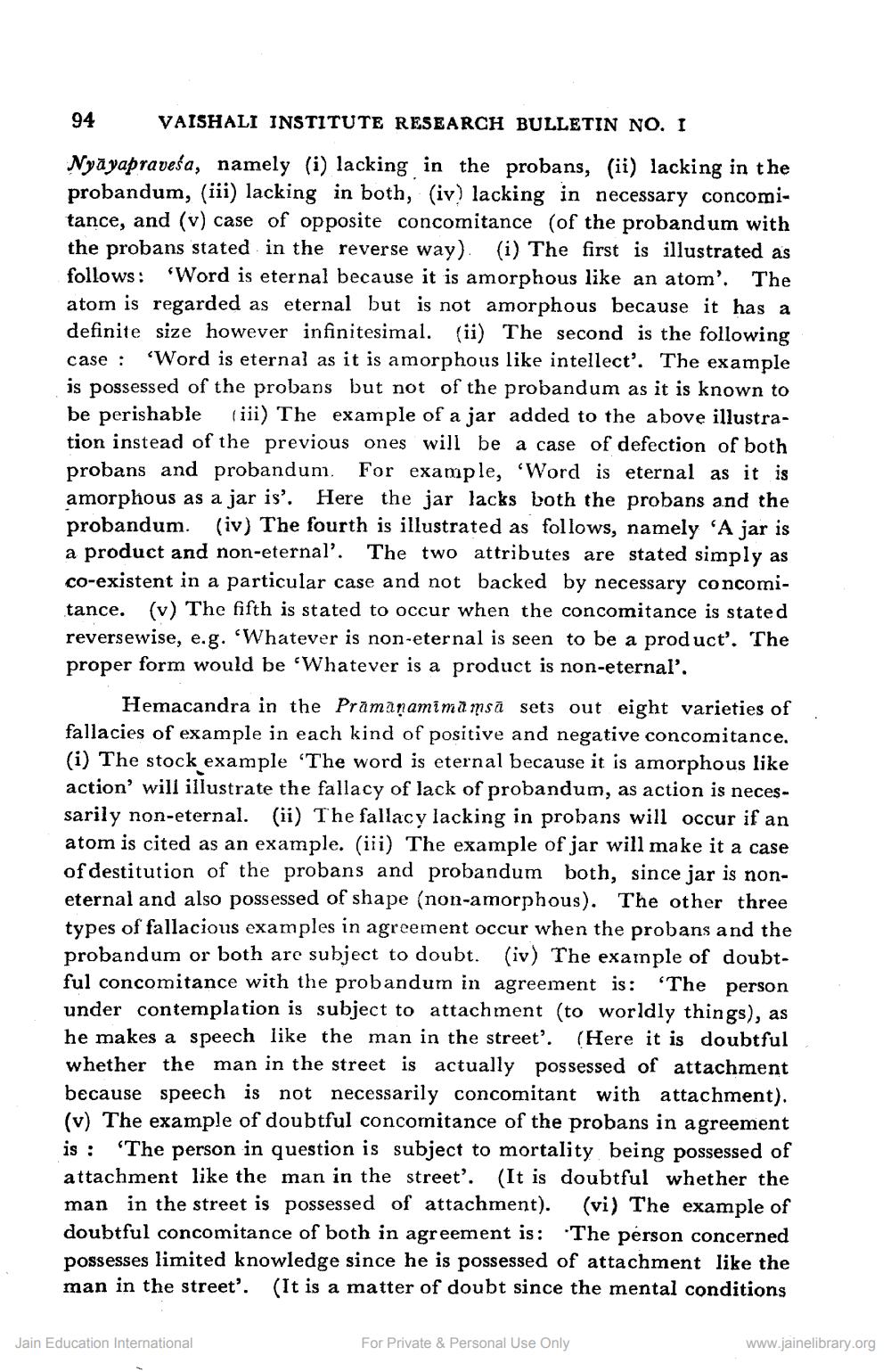________________
94
VAISHALI INSTITUTE RESEARCH BULLETIN NO. I
Nyāyapraveśa, namely (i) lacking in the probans, (ii) lacking in the probandum, (iii) lacking in both, (iv) lacking in necessary concomitance, and (v) case of opposite concomitance (of the probandum with the probans stated in the reverse way) (i) The first is illustrated as follows: 'Word is eternal because it is amorphous like an atom'. The atom is regarded as eternal but is not amorphous because it has a definite size however infinitesimal. (ii) The second is the following case : 'Word is eternal as it is amorphous like intellect'. The example is possessed of the probans but not of the probandum as it is known to be perishable (iii) The example of a jar added to the above illustration instead of the previous ones will be a case of defection of both probans and probandum. For example, Word is eternal as it is amorphous as a jar is'. Here the jar lacks both the probans and the probandum. (iv) The fourth is illustrated as follows, namely 'A jar is a product and non-eternal'. The two attributes are stated simply as co-existent in a particular case and not backed by necessary concomitance. (v) The fifth is stated to occur when the concomitance is stated reversewise, e.g. "Whatever is non-eternal is seen to be a product. The proper form would be "Whatever is a product is non-eternal'.
Hemacandra in the Pramanamimamsā sets out eight varieties of fallacies of example in each kind of positive and negative concomitance. (i) The stock example The word is eternal because it is amorphous like action' will illustrate the fallacy of lack of probandum, as action is necessarily non-eternal. (ii) The fallacy lacking in probans will occur if an atom is cited as an example. (iii) The example of jar will make it a case of destitution of the probans and probandum both, since jar is noneternal and also possessed of shape (non-amorphous). The other three types of fallacious examples in agreement occur when the probans and the probandum or both are subject to doubt. (iv) The example of doubtful concomitance with the probandum in agreement is: 'The person under contemplation is subject to attachment (to worldly things), as he makes a speech like the man in the street'. (Here it is doubtful whether the man in the street is actually possessed of attachment because speech is not necessarily concomitant with attachment). (v) The example of doubtful concomitance of the probans in agreement is : "The person in question is subject to mortality being possessed of attachment like the man in the street'. (It is doubtful whether the man in the street is possessed of attachment). (vi) The example of doubtful concomitance of both in agreement is: The person concerned possesses limited knowledge since he is possessed of attachment like the man in the street'. (It is a matter of doubt since the mental conditions
Jain Education International
For Private & Personal Use Only
www.jainelibrary.org




